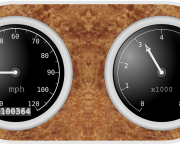
Why Monolithic Architecture Holds eCommerce Businesses Back
 2 min
2 min
Why Monolithic Architecture Holds eCommerce Businesses Back
Most traditional eCommerce platforms are built using a monolithic architecture. That means the entire application — frontend, backend, database, business logic, integrations — is bundled together into one tightly connected system.
At first, this setup seems convenient. Everything is under one roof, handled by one vendor, and maintained in one place. But as your business grows, so do the problems.
The real challenges of monolithic platforms:
- Limited flexibility
If you want to update a single feature, like your checkout or product page, you may have to touch the whole system. That means longer dev cycles, more risk, and higher costs.
- Slow innovation
Trying to add a new integration or test a different payment method? In a monolithic system, even small changes require heavy work. This slows dow









 English
English
 Français
Français
 Deutsch
Deutsch
 Italiano
Italiano
 Español
Español



 Colaborar
Colaborar





















 Puedes apoyar a tus escritores favoritos
Puedes apoyar a tus escritores favoritos





